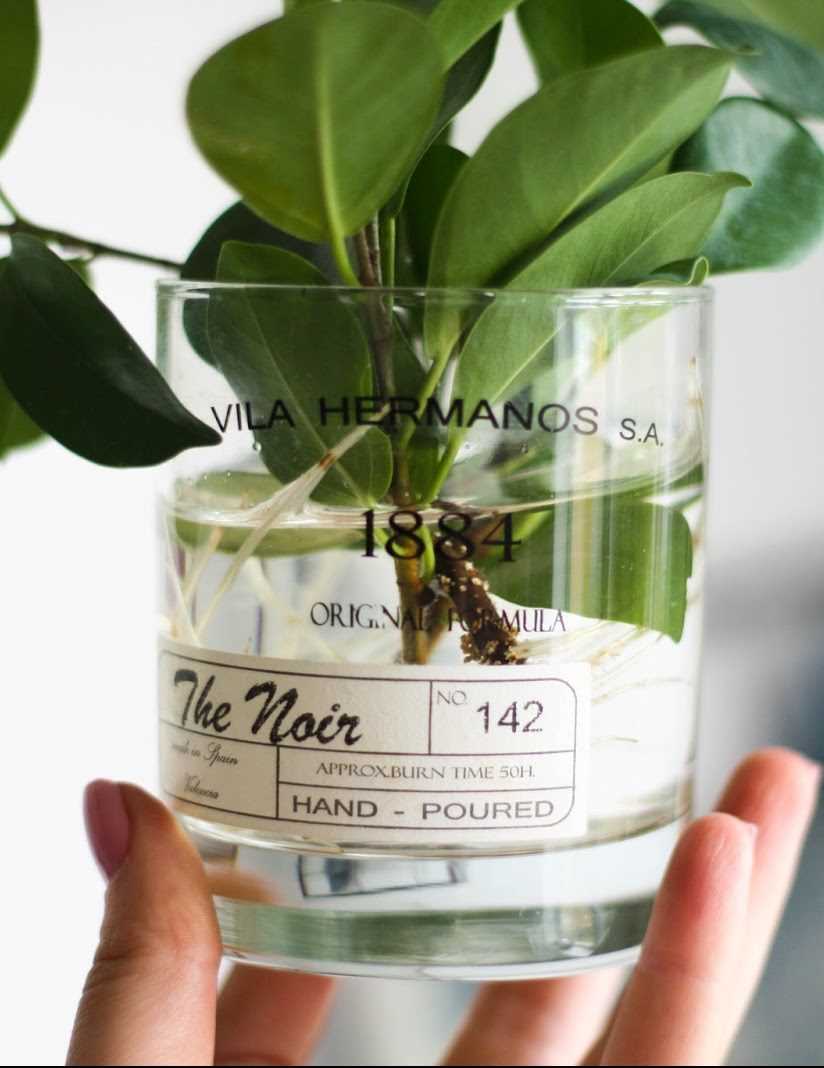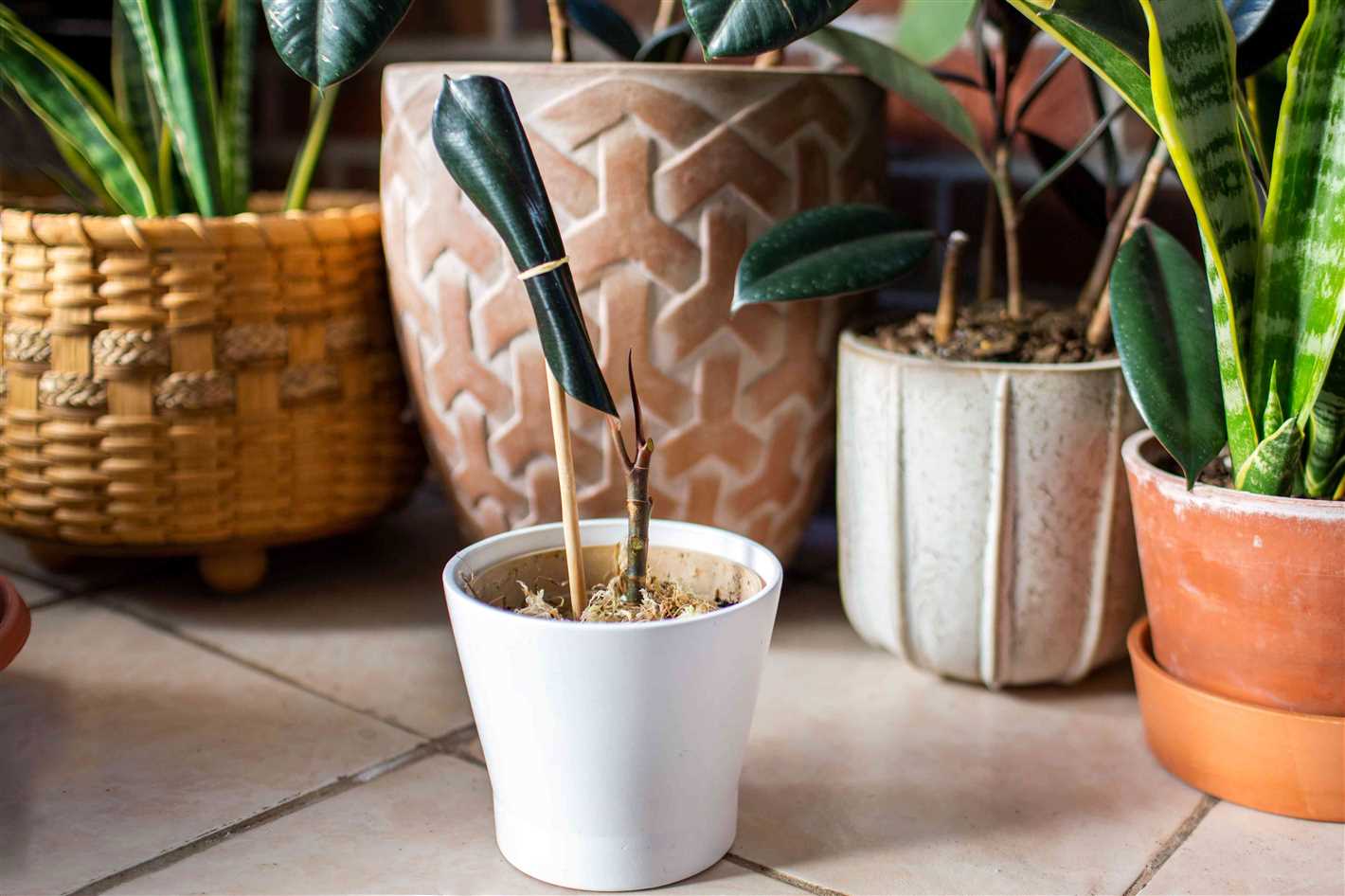- Description of Ficus Plant
- Characteristics
- Uses
- Creating Optimal Conditions for Propagation
- 1. Choose the Right Propagation Method
- 2. Provide Adequate Light
- 3. Maintain Proper Temperature and Humidity
- 4. Use Well-Draining Soil
- 5. Provide Regular Watering
- 6. Apply Rooting Hormone
- 7. Regularly Monitor and Adjust Conditions
- Choosing the Right Ficus Variety
- Consider Your Growing Conditions
- Consider Your Preferences
- Popular Ficus Varieties for Propagation
- Preparing the Propagation Medium
- Materials Needed:
- Steps to Prepare the Propagation Medium:
- Methods of Propagation
- 1. Stem Cuttings
- 2. Air Layering
- 3. Water Propagation
- 4. Division
- Leaf Cutting Propagation
- Stem Cutting Propagation
- Materials Needed
- Steps for Stem Cutting Propagation
- Ensuring High Rooting Success Rate
- 1. Proper Timing
- 2. Choose Healthy Parent Plants
- 3. Select the Right Cutting
- 4. Proper Cutting Preparation
- 5. Use a Well-Draining Medium
- 6. Provide Adequate Humidity
- 7. Maintain Ideal Temperatures
- 8. Regularly Monitor and Water
- 9. Provide Indirect Light
- 10. Be Patient
- Proper Watering Techniques
- Providing Adequate Light and Temperature
- Light Requirements
- Temperature Conditions
- Q&A:
- What is the best time to propagate ficus plants?
- What are some methods that can be used to propagate ficus plants?
- How long does it take for ficus cuttings to root?
- What is the best potting mix to use for propagating ficus plants?
- Can I propagate ficus plants in water?
- How often should I water propagating ficus plants?
- What can I do to increase the success rate of ficus propagation?
- Video: Rooting Fig Cuttings | A foolproof rooting method | Check the new ‘No Shock’ transplant method
Propagating ficus plants can be a rewarding and cost-effective way to expand your indoor garden or share your love for these popular houseplants with friends and family. Ficus, also known as weeping fig or rubber tree, is a versatile and resilient plant that can be easily propagated through several methods.
One of the simplest and most successful methods of propagating ficus is through stem cuttings. Begin by selecting a healthy and mature ficus plant with strong, well-developed stems. Using clean and sharp scissors or pruning shears, cut a 4-6 inch long stem from the parent plant just above a leaf node. Make sure to remove any leaves that will be submerged in water or soil to prevent rot.
After you’ve taken your stem cuttings, you have two options for rooting them:
- Water propagation: Place the stem cutting in a glass or jar filled with clean, room temperature water. Make sure the cut end is fully submerged and remove any leaves that may touch the water. Place the glass in a bright, indirect light location and change the water every few days to prevent bacterial growth. In a few weeks, you should start to see roots forming. Once the roots are about an inch long, carefully transplant the cutting into a well-draining potting mix.
- Soil propagation: Dip the cut end of the stem cutting in a rooting hormone powder to encourage root growth. Then, insert the cutting into a small pot filled with a well-draining potting mix. Water the cutting thoroughly and place it in a warm and humid location with bright, indirect light. Keep the soil evenly moist but not waterlogged. In about 4-6 weeks, you should start to see roots forming. Once the roots are well-developed, you can transplant the cutting into a larger pot.
It’s important to note that ficus plants can be sensitive to temperature and humidity changes during the rooting process. Make sure to provide them with a stable and comfortable environment to increase the success rate of rooting.
By following these simple steps and providing the right conditions, you can easily propagate ficus plants and achieve a high rooting success rate. Whether you choose water propagation or soil propagation, be patient and give your cuttings the time they need to develop roots. Soon enough, you’ll have new, thriving ficus plants to enjoy or share with others.
Description of Ficus Plant
Ficus is a genus of evergreen flowering plants in the family Moraceae, commonly known as the fig family. It is native to tropical and subtropical regions of Asia, Africa, and the Americas. The genus contains more than 800 species of woody trees, shrubs, and vines.
Characteristics
Ficus plants are known for their attractive foliage, which varies in shape and color depending on the species. They typically have glossy, leathery leaves that range in size from small and narrow to large and broad. The leaves can be simple or compound, with lobed or serrated margins.
Another characteristic feature of Ficus plants is their unique growth habit. Many species produce aerial roots, which can grow down from the branches and take root in the ground, allowing the plant to spread and form dense thickets. Some species also have a strangling habit, where they germinate in the canopy of a host tree and send roots down to the ground, eventually enveloping and killing the host tree.
Ficus plants are also known for their fruit, which are botanically considered figs. The figs vary in size, color, and flavor depending on the species. They can be edible or inedible, and some species are cultivated for their tasty fruits.
Uses
Ficus plants have a wide range of uses, both ornamental and practical. They are commonly grown as houseplants, in gardens, and as street trees due to their attractive foliage and ability to thrive in various conditions.
Some species of Ficus, such as Ficus lyrata (fiddle-leaf fig) and Ficus elastica (rubber tree), are popular indoor plants known for their large, ornamental leaves. They can add a touch of tropical elegance to any interior space.
In addition to their ornamental value, certain species of Ficus are utilized for their practical applications. The latex derived from Ficus elastica, for example, is used to make rubber. The fruits of other species, such as Ficus carica (common fig), are consumed by humans and used in various culinary preparations.
| Common Name | Scientific Name |
|---|---|
| Weeping fig | Ficus benjamina |
| Indian rubber tree | Ficus elastica |
| Audrey ficus | Ficus benghalensis |
| Common fig | Ficus carica |
Overall, Ficus plants are diverse, attractive, and versatile, making them a popular choice among plant enthusiasts and gardeners.
Creating Optimal Conditions for Propagation
1. Choose the Right Propagation Method
There are several methods to propagate Ficus plants, including stem cuttings, air layering, and root division. Each method has its own advantages and success rates. When propagating Ficus plants, it is essential to choose the method that suits your preferences and the specific plant species you are working with.
2. Provide Adequate Light
Ficus plants thrive in bright, indirect light. When propagating Ficus cuttings, place them in a location that receives bright, filtered light. Avoid exposing the cuttings to direct sunlight, as this can cause them to dry out or become damaged.
3. Maintain Proper Temperature and Humidity
Ficus plants prefer warm and humid environments. To create the optimal conditions for propagation, keep the temperature between 70-80°F (21-27°C) and maintain a humidity level of around 50%. You can increase humidity by using a misting spray bottle or placing the cuttings in a mini greenhouse.
4. Use Well-Draining Soil
The rooting medium for Ficus propagation should be well-draining to prevent waterlogging and root rot. A mix of peat moss, perlite, and vermiculite or a commercially available potting mix suitable for rooting cuttings can be used.
5. Provide Regular Watering
Keep the propagation medium slightly moist but not waterlogged. Overwatering can lead to rotting of the cuttings, while underwatering can cause them to dry out. Water the cuttings when the top layer of soil feels slightly dry.
6. Apply Rooting Hormone
Using a rooting hormone can significantly increase the success rate of Ficus propagation. Dip the cut end of the stem cutting into a rooting hormone powder or gel before inserting it into the rooting medium.
7. Regularly Monitor and Adjust Conditions
Check the cuttings regularly for signs of rooting, such as the appearance of new growth or the presence of roots through the drainage holes. Adjust the watering, lighting, and humidity levels as needed to ensure the optimal conditions for successful propagation.
Choosing the Right Ficus Variety
When it comes to propagating Ficus plants, it’s important to choose the right variety for your needs. Different Ficus varieties have different characteristics and requirements, so it’s essential to select a variety that is suitable for your growing conditions and preferences.
Consider Your Growing Conditions
- Light: Ficus varieties have different light requirements. Some prefer bright, indirect light, while others can tolerate low light conditions. Consider the amount of light available in your desired growing location and choose a variety that matches those conditions.
- Temperature: Ficus plants have different temperature preferences. Some varieties thrive in warm temperatures, while others can tolerate cooler conditions. Make sure to choose a variety that can thrive in your local climate.
- Humidity: Certain Ficus varieties prefer higher humidity levels, while others can tolerate drier conditions. Consider the humidity levels in your growing area and select a variety that matches those conditions.
Consider Your Preferences

- Size: Ficus varieties come in a range of sizes, from small houseplants to large trees. Consider the available space and your preferences for plant size when selecting a variety.
- Leaf Shape and Color: Ficus plants have different leaf shapes and colors. Some varieties have large, glossy leaves, while others have small, variegated leaves. Consider the aesthetics of the plant and choose a variety that matches your preferences.
- Growth Habit: Ficus varieties can have different growth habits, including bushy, trailing, or tree-like. Consider the growth habit that you prefer and choose a variety that fits your vision for your indoor or outdoor space.
Popular Ficus Varieties for Propagation
Here are a few popular Ficus varieties that are commonly propagated:
- Ficus elastica (Rubber Plant)
- Ficus lyrata (Fiddle Leaf Fig)
- Ficus benjamina (Weeping Fig)
- Ficus microcarpa (Ginseng Ficus)
These varieties are known for their beauty, ease of propagation, and adaptability to different growing conditions. However, keep in mind that there are many other Ficus varieties available, each with its own unique characteristics.
By considering your growing conditions and preferences, you can choose the right Ficus variety that will thrive in your environment and provide you with years of enjoyment.
Preparing the Propagation Medium
Before propagating ficus plants, it is important to prepare a suitable propagation medium that provides the necessary conditions for root growth. The propagation medium should be well-draining, retain moisture, and provide aeration to the developing roots.
Materials Needed:
- Peat moss or coco peat
- Perlite or vermiculite
- Coarse sand
- Seedling trays or pots
- Clear plastic bags or propagators
- Water
Steps to Prepare the Propagation Medium:
- In a clean container, combine equal parts peat moss or coco peat, perlite or vermiculite, and coarse sand. Mix well to ensure even distribution.
- Add water gradually while stirring the mixture to achieve a damp, but not soaking wet consistency. The mixture should hold its shape when squeezed but not release an excessive amount of water.
- Fill seedling trays or pots with the prepared propagation medium, leaving a small gap at the top for watering.
- Level the surface of the propagation medium and lightly press it down to ensure good contact with the bottom of the trays or pots.
- If using seedling trays, make small holes in the medium with a pencil or a dibber to accommodate the cuttings.
- Water the propagation medium lightly to settle it and ensure the moisture is evenly distributed.
- Cover the trays or pots with clear plastic bags or propagators to create a humid environment for root development.
- Place the trays or pots in a warm and bright location, but away from direct sunlight.
Note: It is important to sterilize the propagation medium before use to prevent the growth of pathogens. This can be done by heating the mixture in an oven at a temperature of 180°F (82°C) for 30 minutes.
Methods of Propagation

There are several methods of propagating ficus plants, each with its own advantages and disadvantages. Here are some common methods:
1. Stem Cuttings

Stem cuttings are one of the most popular and effective methods of propagating ficus plants. To propagate using stem cuttings, follow these steps:
- Select a healthy stem that is free of diseases and pests.
- Using a clean and sharp knife or pruners, cut a stem that is about 4-6 inches long.
- Remove any leaves from the lower two-thirds of the stem.
- Dip the cut end of the stem in a rooting hormone to encourage root growth.
- Plant the cutting in a well-draining potting mix and keep it in a warm and humid environment.
- Water the cutting regularly and provide indirect light.
- After a few weeks, the cutting should start developing roots, and you can transplant it into a larger pot.
2. Air Layering
Air layering is another method that can be used to propagate ficus plants. This method involves making a small incision in the stem and encouraging the development of roots before detaching the new plant. Here’s how to do it:
- Select a healthy stem that is about pencil thickness and make a small incision about halfway through the stem.
- Apply rooting hormone to the incision to promote root growth.
- Wrap the incision with sphagnum moss or damp paper towel, and cover it with plastic wrap or aluminum foil to keep it moist.
- Secure the moss or paper towel and plastic wrap with string or plastic tape.
- Keep the wrapped section moist and warm by misting it regularly and covering it with a plastic bag.
- Once the roots have developed, cut below the new roots and plant the new plant in a well-draining potting mix.
3. Water Propagation
Water propagation is a simple and easy method to propagate ficus plants. Here’s how to do it:
- Select a healthy stem cutting that is about 4-6 inches long.
- Remove any leaves from the lower two-thirds of the cutting.
- Place the cutting in a jar or glass of water, making sure that the nodes are submerged.
- Keep the jar in a well-lit area with indirect sunlight.
- Change the water every 2-3 days to prevent rot and promote root growth.
- After a few weeks, the cutting should develop roots, and you can transplant it into a pot with well-draining soil.
4. Division

Division is a method of propagation that works well for ficus plants that have multiple stems or clumps. Here’s how to do it:
- Carefully remove the ficus plant from its pot and separate the clumps or stems that have developed their own root systems.
- Use a clean and sharp knife to divide the clumps or stems.
- Plant each divided section in its own pot with well-draining soil.
- Water the newly potted divisions thoroughly and place them in a warm and humid environment.
- Provide indirect light and regular watering until the divisions establish themselves.
With these propagation methods, you can easily propagate ficus plants and achieve a high rooting success rate. Choose the method that works best for you and enjoy growing more ficus plants!
Leaf Cutting Propagation

Leaf cutting propagation is one of the easiest methods to propagate a ficus plant. It involves taking a leaf cutting from a healthy mother plant and providing it with the necessary conditions to grow roots and develop into a new plant. Here are the general steps to follow for leaf cutting propagation:
- Select a healthy leaf: Choose a mature leaf from the mother plant that is free from diseases, pests, or damage.
- Cut the leaf: Using a clean and sharp knife or scissors, make a clean cut just below the leaf node. The leaf node is where the leaf connects to the stem.
- Prepare the cutting: Remove any lower leaves or excess foliage from the cutting, leaving only a few leaves at the top.
- Dip the cutting in rooting hormone: This step is optional but can help promote root growth. Dip the cut end of the leaf in rooting hormone powder or gel.
- Plant the cutting: Prepare a well-draining potting mix and create a small hole for the cutting. Insert the cut end of the leaf into the soil and gently firm it in place.
- Provide proper care: Place the pot in a warm and bright location with indirect sunlight. Keep the soil moist but not waterlogged, mist the cutting regularly to maintain humidity, and avoid exposing it to extreme temperatures.
- Monitor the progress: After a few weeks, check for the development of roots by gently tugging on the leaf. Once you feel resistance, it indicates that roots have formed.
- Transplant the rooted cutting: Once the cutting has developed a good root system, carefully transplant it into a larger pot with well-draining soil. Provide regular care and maintenance as you would for a mature ficus plant.
Leaf cutting propagation can be a rewarding and successful method to propagate ficus plants. It allows you to create new plants from a desirable mother plant and can be a fun and satisfying gardening project.
Stem Cutting Propagation
Stem cutting propagation is a popular and effective method for propagating ficus plants. By taking a stem cutting from a healthy parent plant and providing optimal conditions for root development, you can achieve a high rooting success rate and grow new plants.
Materials Needed

- Sharp and sterilized pair of pruning shears or knife
- Rooting hormone
- Containers or pots filled with a well-draining propagation mix
- Clean water
- Misting bottle
- Clear plastic bags or humidity domes
Steps for Stem Cutting Propagation

- Select a healthy and disease-free parent plant for taking stem cuttings. The parent plant should have strong and mature stems without any signs of damage or disease.
- Using sharp and sterilized pruning shears or a knife, take a stem cutting that is around 6-8 inches long. Make a clean cut just below a leaf node, ensuring there are at least 2-3 nodes on the cutting.
- If desired, you can dip the cut end of the stem cutting into a rooting hormone powder or gel to promote root development.
- Fill containers or pots with a well-draining propagation mix. Moisten the mix slightly with clean water.
- Make a hole in the propagation mix using a pencil or finger, and gently insert the lower end of the stem cutting into the hole. Firmly press the mix around the cutting to hold it in place.
- Mist the cutting with clean water using a misting bottle, making sure to moisten the leaves and stem without over-saturating the soil.
- Cover the cutting with a clear plastic bag or humidity dome to create a humid environment that will promote root development. Place the container in a warm and well-lit area, but away from direct sunlight.
- Check the moisture level of the propagation mix regularly and mist the cutting if it begins to dry out. Avoid overwatering, as this can lead to rotting.
- After a few weeks, gently tug on the stem cutting to check for resistance, indicating that roots have developed. If the cutting resists, roots have formed and it can be gradually acclimatized to normal growing conditions.
Stem cutting propagation is a rewarding and cost-effective way to propagate ficus plants. With a little patience and care, you can achieve a high rooting success rate and enjoy the beauty of new ficus plants in your garden or home.
Ensuring High Rooting Success Rate
1. Proper Timing

Timing plays a crucial role in ensuring a high rooting success rate for propagating ficus plants. It is recommended to propagate during the active growth phase, which is typically in spring or early summer. This is when the plant has the highest chances of developing new roots successfully.
2. Choose Healthy Parent Plants
Healthy parent plants are more likely to produce healthy cuttings that can root successfully. Look for parent plants that have vibrant foliage, strong stems, and no signs of disease or stress. These plants will provide the best genetic material for propagation.
3. Select the Right Cutting
Choose a stem cutting that is about 4-6 inches long and has at least 2-3 nodes. Nodes are the small bumps on the stem where leaves and roots emerge. Make sure to use a sharp, clean cutting tool to minimize damage to the cutting.
4. Proper Cutting Preparation
Remove any leaves that are close to the bottom of the cutting, leaving only a few leaves at the top. These leaves will provide some energy for the cutting while it develops roots. It is also a good idea to dip the cut end of the cutting in rooting hormone before planting to enhance root formation.
5. Use a Well-Draining Medium
Choose a well-draining medium for planting your ficus cuttings. A mixture of peat moss and perlite or vermiculite works well. Avoid using heavy soils that can retain too much water and cause root rot.
6. Provide Adequate Humidity
Ficus cuttings require high humidity to promote root development. You can create a mini greenhouse effect by placing a clear plastic bag over the potted cutting or by using a propagation tray with a clear plastic cover. This will help to retain moisture around the cutting and promote rooting.
7. Maintain Ideal Temperatures

Ficus plants prefer warm temperatures for successful root development. The optimum temperature range for rooting is generally between 70-80°F (21-27°C). Avoid exposing the cuttings to extreme temperature changes or drafts that can hinder root formation.
8. Regularly Monitor and Water
Check the moisture levels of the propagation medium regularly and water when it feels dry to the touch. Be careful not to overwater, as excessive moisture can lead to rotting. Aim to keep the medium slightly moist but not waterlogged.
9. Provide Indirect Light
Place the cuttings in an area with indirect light. Ficus plants prefer bright but diffused light to avoid scorching the leaves. A location near a window with filtered sunlight or under grow lights is ideal for optimal root development.
10. Be Patient
Rooting can take several weeks for ficus cuttings. Be patient and resist the temptation to disturb or check for root development too soon. Allow the cuttings sufficient time to develop a strong root system before transplanting them into separate pots.
By following these guidelines, you can greatly increase your chances of achieving a high rooting success rate when propagating ficus plants. Remember to provide the right environment, care for the cuttings diligently, and have patience throughout the rooting process.
Proper Watering Techniques
Proper watering is essential for the successful propagation of Ficus plants. Here are some techniques to ensure optimal moisture levels for the cuttings:
- Water Quality: Use clean, filtered water or allow tap water to sit for 24 hours to allow chlorine and other chemicals to evaporate.
- Moisture Meter: Invest in a moisture meter to accurately measure the moisture content of the soil. This tool will help determine when to water the cuttings.
- Mist or Spray: Spray or mist the leaves of the cuttings with water regularly to maintain humidity. This will help prevent wilting and drying out.
- Bottom Watering: Place the pots or trays containing the cuttings in a shallow container filled with water. Allow the soil to absorb moisture from the bottom. This method helps prevent overwatering and reduces the risk of fungal diseases.
- Drainage: Ensure the pots or trays have adequate drainage holes to allow excess water to escape. Poor drainage can lead to waterlogged soil and root rot.
Remember to monitor the soil moisture levels regularly and adjust the watering frequency based on the specific needs of the Ficus cuttings. It’s better to slightly underwater than overwater, as overwatering can cause root rot and damage the developing roots.
Providing Adequate Light and Temperature
When propagating ficus plants, providing the right amount of light and maintaining the appropriate temperature is crucial for a successful rooting process. Here are a few guidelines to follow:
Light Requirements
- Place the ficus cuttings in a location that receives bright, indirect light.
- Avoid exposing the cuttings to direct sunlight, as it can cause excessive heat and damage the delicate roots.
- If natural light is insufficient, use artificial grow lights to supplement the lighting requirements.
- Keep the lights on for approximately 12-16 hours a day to provide consistent and adequate illumination.
Temperature Conditions
- Keep the temperature around the ficus cuttings between 70-80°F (21-27°C).
- Avoid placing the cuttings in areas with extreme temperature fluctuations or drafts, as they can hinder rooting.
- Ensure a consistent temperature throughout the day and night to promote optimal growth.
By providing the ficus cuttings with the right amount of light and maintaining suitable temperature conditions, you can greatly increase the chances of successful propagation and achieve a high rooting success rate.
Q&A:
What is the best time to propagate ficus plants?
The best time to propagate ficus plants is during the spring or early summer when the plants are actively growing.
What are some methods that can be used to propagate ficus plants?
There are several methods that can be used to propagate ficus plants, including stem cuttings, air layering, and leaf bud cuttings.
How long does it take for ficus cuttings to root?
The time it takes for ficus cuttings to root can vary depending on the specific ficus variety and the conditions in which they are being propagated. Generally, it can take anywhere from 2-6 weeks for ficus cuttings to develop roots.
What is the best potting mix to use for propagating ficus plants?
The best potting mix to use for propagating ficus plants is a well-draining mix that contains a combination of peat moss, perlite, and sand.
Can I propagate ficus plants in water?
Yes, ficus plants can be propagated in water. Simply take a cutting from the plant, remove any leaves from the lower portion of the stem, and place the cutting in a jar or container filled with water. Change the water every few days to prevent bacterial growth.
How often should I water propagating ficus plants?
When propagating ficus plants, it is important to keep the soil consistently moist, but not soggy. Water the plants whenever the top inch of soil feels dry.
What can I do to increase the success rate of ficus propagation?
To increase the success rate of ficus propagation, it is important to provide the plants with the right conditions. This includes keeping the soil consistently moist, providing them with bright indirect light, and maintaining a warm temperature of around 70-80°F (21-27°C).
Video:
Rooting Fig Cuttings | A foolproof rooting method | Check the new ‘No Shock’ transplant method







